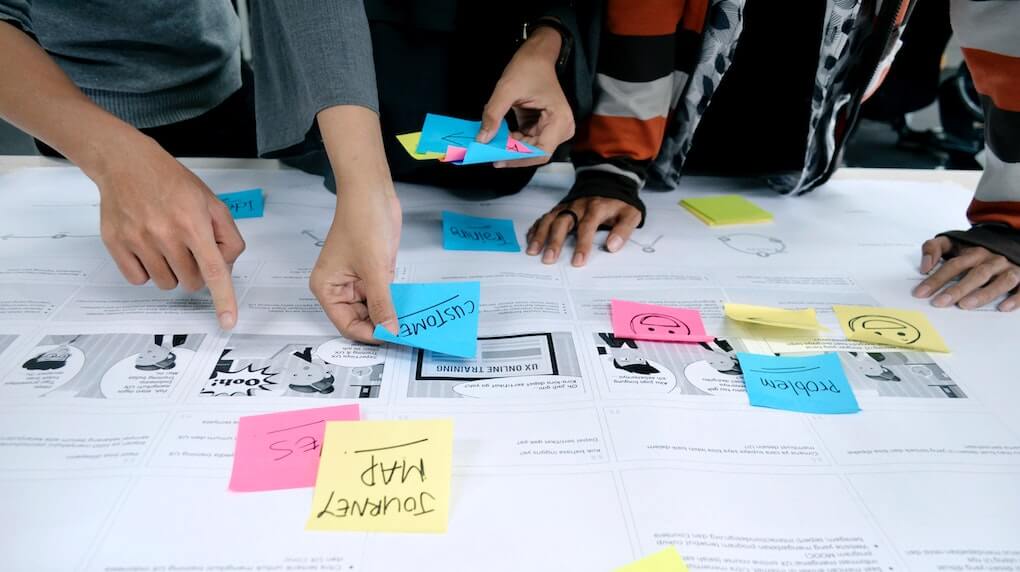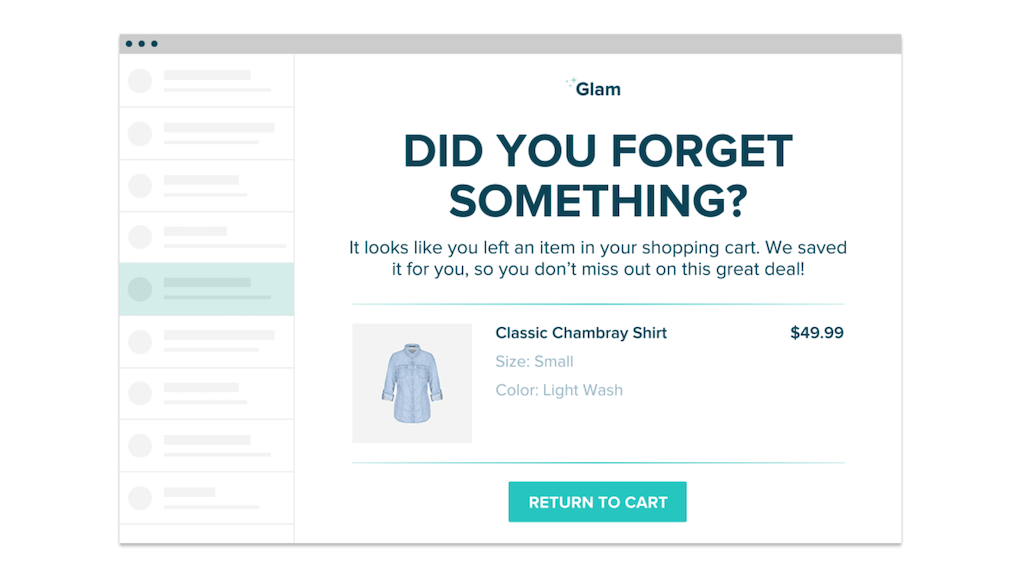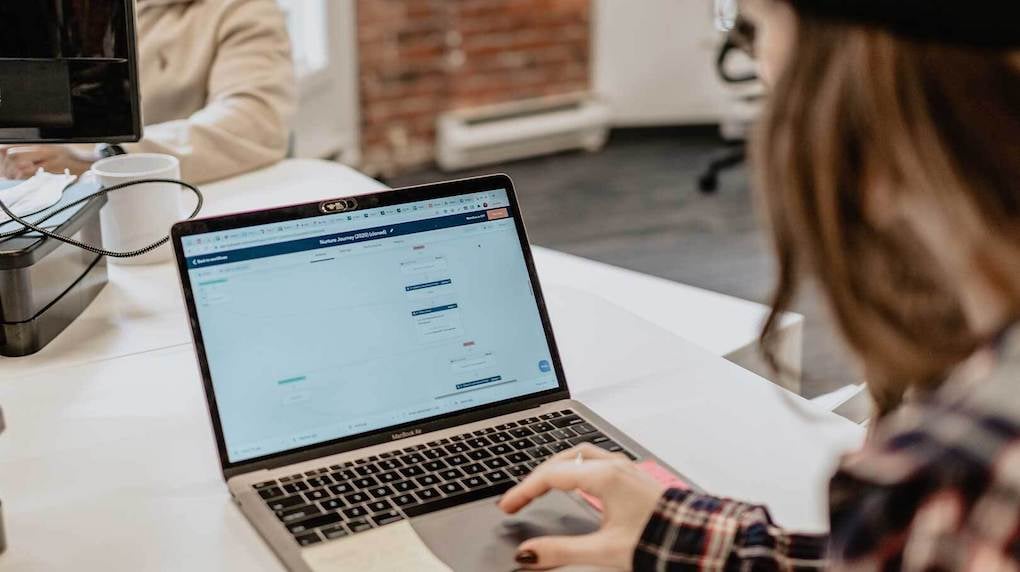The challenges that B2B marketers face are becoming increasingly nuanced. To be effective in your strategies, you need to:
- Understand how and when customers interact with your brand
- Determine the answers you can provide to their constantly evolving questions
- Know what they want and how you can give it to them
The more details you have about your customer journeys, the more you can see your content from their perspective and ultimately understand their needs. In B2C marketing, this is easy to do because the buyer and the user are usually the same. In B2B, this is not always the case and marketers must rely on more intricate resources to answer user pain points.
That being said, there is a lot to learn from the user-centric approach to attracting customers that B2C marketing is already championing. By creating detailed customer journeys, B2C marketers can track cart abandonment, upsells, latest products, referrals, allowing them to understand exactly where in a journey their customer was won or lost.

Turning potentials into clients starts with a deep-dive into user pain points, coupled with detailed automation tools. Ultimately, both sides are here for the customer, so the more you know, the better.
How to build effective customer journey maps
A customer journey map is a detailed, visual story of the way a customer has interacted with your brand. A journey map can look something like this: Customer A saw a paid ad for your product on Quora, they followed the call-to-action directly to your website, looked at the advertised product, clicked through a few more product pages, visited the contact us page, but then logged off.

Collecting this information can help you understand which parts of your flywheel are effective and which are not. In the above example, you can determine that the directed ads and product pages are successful, but perhaps the contact page isn’t set up to convert, or maybe your product pages should be better optimized.
For B2B marketers, it’s important to create multiple customer journey maps that explore not only buyer behaviors, but users as well. Understanding how customers use your resources, alongside your targeted sales funnels, will help you answer pain points and build long-lasting customer relationships.
Lead customer journeys to sign-ups
Customer journey paths are rarely linear and not every journey leads to a sale. But, that doesn’t mean you can’t offer a customer valuable insights or give them an opportunity to ask questions.
Leading your customer journey to sign-ups, such as a newsletter subscription or a product walkthrough, keeps them in your flywheel. This tactic allows you to leverage technology, such as HubSpot Insights or Clearbit, to support your sales process. It also gives you an opportunity to gather emails for remarketing and customize your end goals.
Ask yourself questions like:
- Are customers who participate in a product webinar more or less likely to purchase?
- Are customers in your newsletter ecosystem really converting?
- If not, why?
Answering these questions will not only improve your user journeys but help you discover ways to better service your customers in the long-run.
Nurture journeys based on audience segments and behaviors
Most sales don’t happen during a customer’s first interaction with a brand, so it’s important to find ways to connect throughout their journey. You can create audience segments and automated lead nurturing campaigns directly in your B2B marketing platforms, such as Salesforce or HubSpot.
If you segment users by their tech stack, Clearbit can identify which technology your lead is using, e.g. Salesforce and Klavyio, and your automated customer journey workflow could send them content that is pertinent to their software. It's all about staying relevant.
Consider the way you approach abandonment journeys
Abandoned cart emails allow B2C marketers to engage with customers who have left products in a cart without completing their transaction. In a B2B setting, customers may be looking for more than just a product. In any scenario, checking in with a customer who showed real interest in buying from you is always a good idea.

If, for example, someone ghosts you after receiving a quote or demo, an abandonment email is a great way to follow up and win the sale. To personalize this system even further, try a range of calls-to-action when sending out abandonment emails. Examples include:
- Free consultation/trial
- Personalized video
- Find a dealer
- Corporate or bulk discount options
- Quiz
- Assessment
- “How to” guide
- Video course
- Join our webinar to learn more
These messages offer added value to incoming customers, as well as giving you an opportunity to leverage the distinct B2B side of your business.
Upsell, resell, keep them in the funnel
In B2B marketing, you often rely on client retention to keep the business healthy. This is different from the B2C market, which tends to engage new customers more frequently. Because of this, B2B marketing starts further down the sales funnel than B2C, as your customer is likely already familiar with your brand and services.
That’s exactly where the prospect lies in B2B marketing. Selling to an existing customer is always easier (and cheaper) than converting a new one. You have an established relationship, a level of trust, and insights into their unique needs.
One thing you can take away from B2C upsell tactics is utilizing automation to prompt upsells within the funnel. This is easy when you are running a SaaS, where prompts can be driven through the software. Outside of a working product, you can automate your emails to go out whenever a client is partially through their subscription, or after a certain period of owning your product or using your service. Remember that your marketing needs to support your operations team here, as marketing is not their first priority.

Just as B2C businesses update their mailing lists with new products, so should B2B. Stay on top of your mailing lists and keep your leads informed of any new services and improved processes that you may be offering. Chances are, they’ll be grateful for the update.
Whatever you do, make sure to start soft and keep engagement at the top of your mind. Even if you don’t get the upsell right away, continuing to nurture your customer relationships will help improve your chances of selling in the future.
Remember: Test, improve, and scale up
With any new marketing technique, it’s important to start somewhere. Find the areas where your tactics could be improved and start testing. It’s a good idea to create an always-on journey that is automated and optimized for your funnels. The B2B market remains unique and overall, listening to our customers and finding ways to improve our services will improve customer retention across the board.